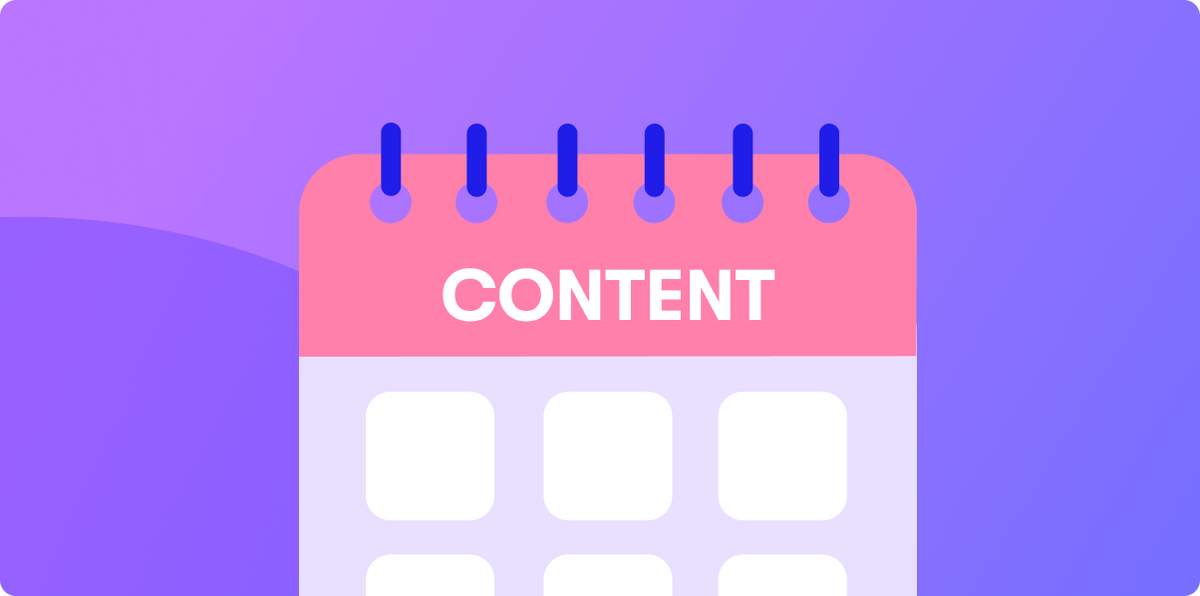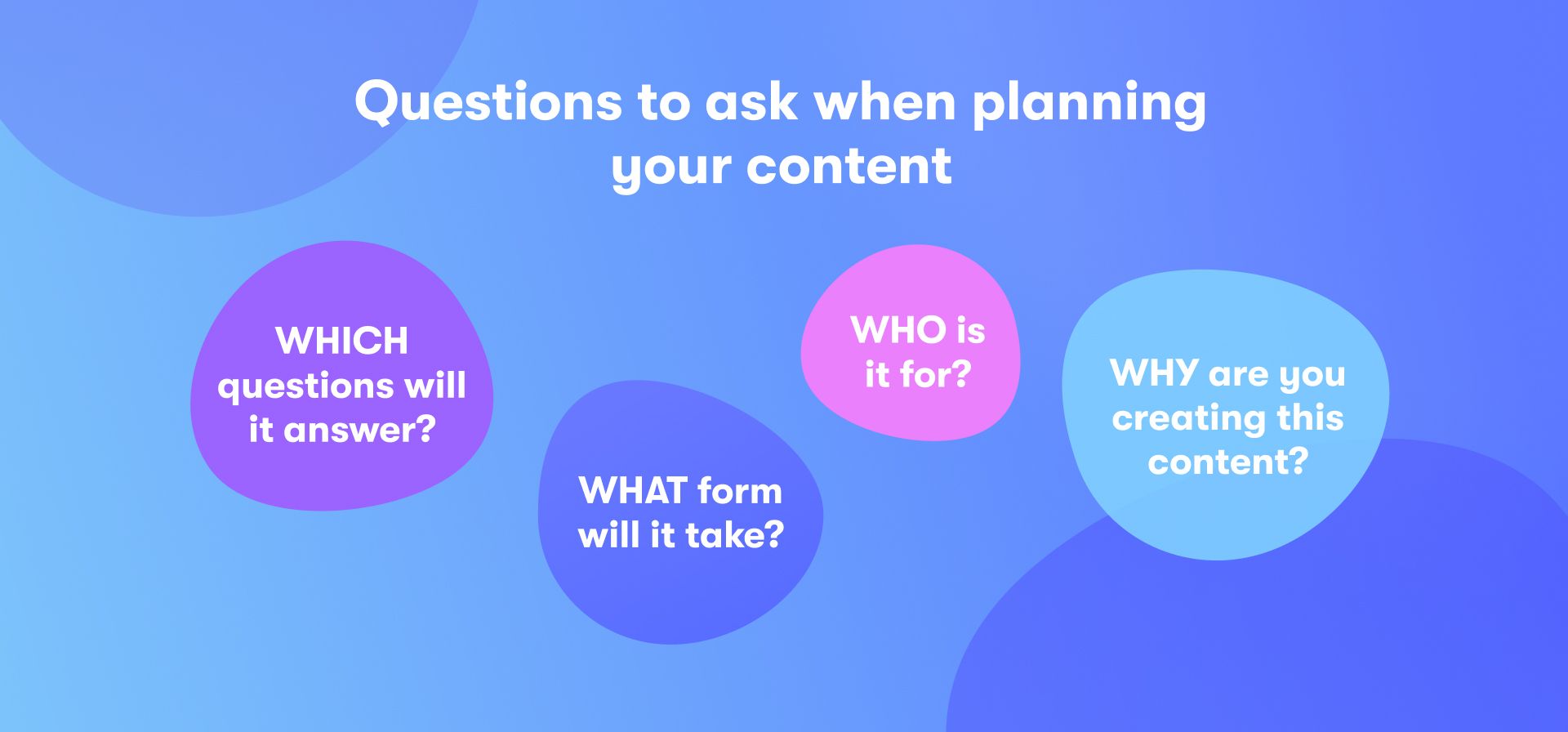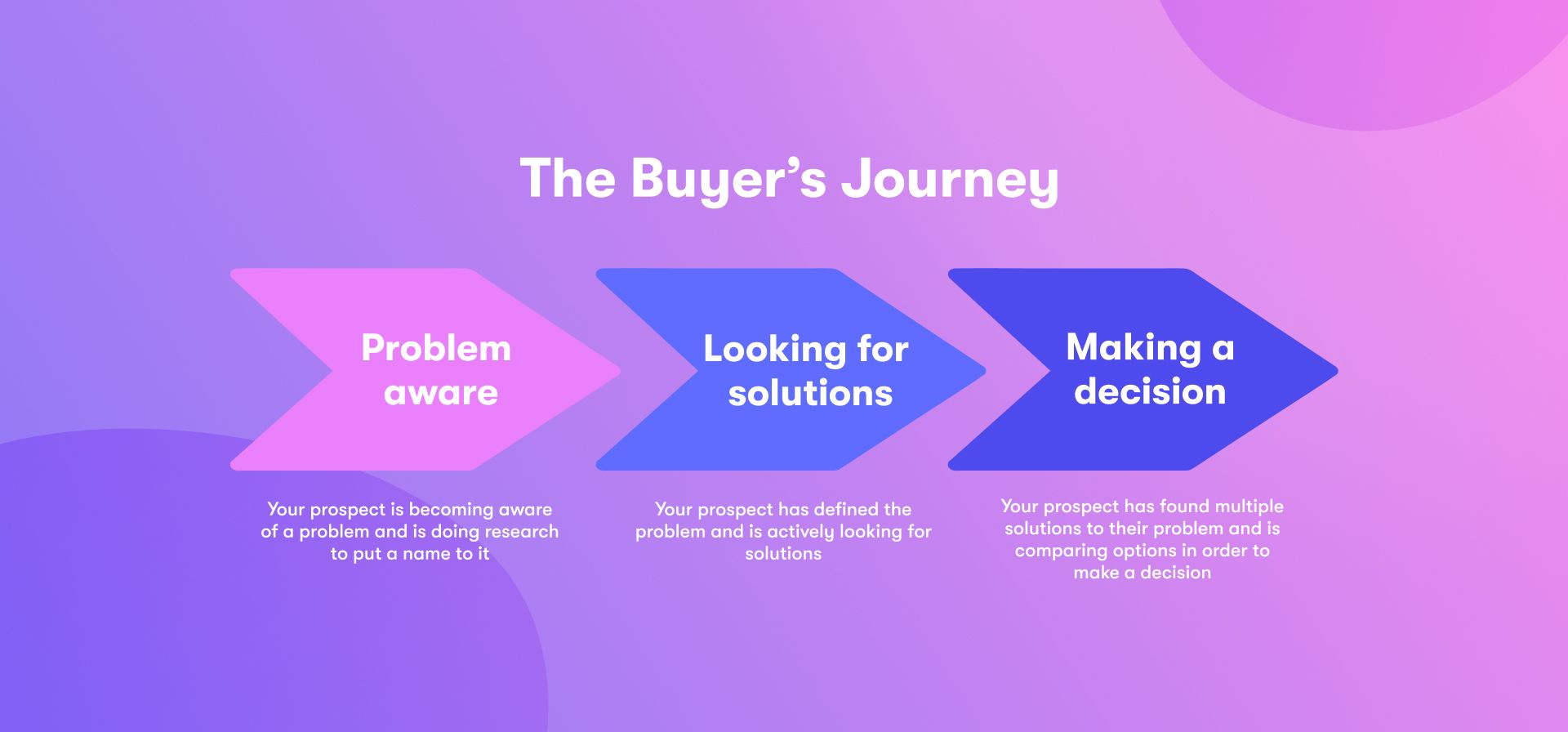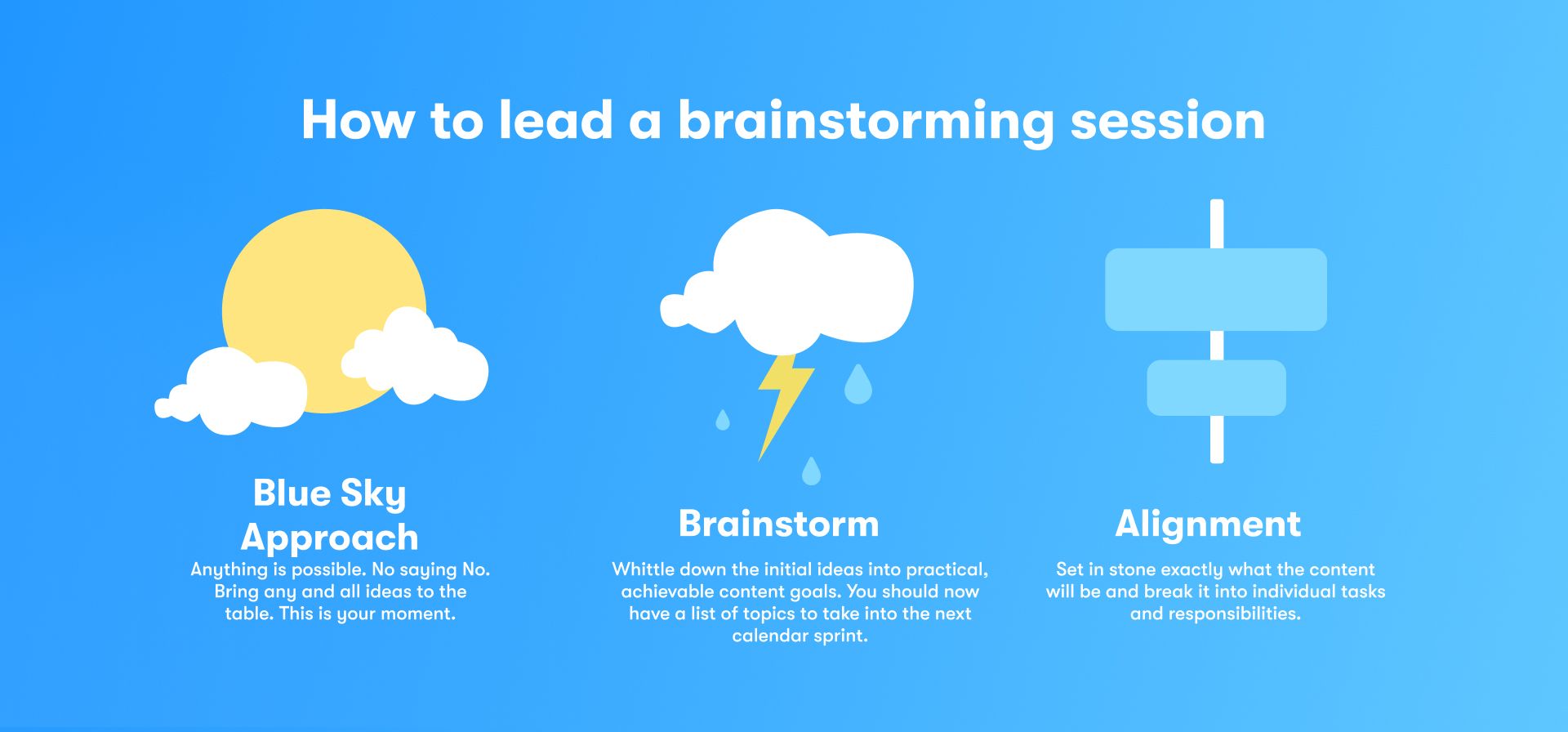How to Create an Effective Content Plan in 2022

Jumpstart your content plan in 3 steps
We content marketers have all been there. We’ve all been at that brainstorming session where ideas are flowing, ambitious goals are set with confidence, and you leave the meeting feeling fired up and itching to get started. But what’s missing is a structure, a plan to get the content rolling in an organized, timely way...
In 2022, it’s no secret that to improve your Google rank, prompt audience engagement, or generate high-quality leads, you’re going to need frictionless collaboration and a detailed content plan to get your content strategy rolling.
A content plan is a strategic way to prepare, create, and deliver content. Think of it like this - it’s an approach to distribute information about your product or service in all the places your ideal customer is searching for it. In an oversaturated digital world, creating content that drives measurable success is easier said than done. But don't have a meltdown, we’ve got you covered! We’ve mapped out the content planning process from start to finish to help you establish a framework to bring your creative content ideas to life.
Step 1: Investigate and collaborate
Planning out your content strategy is an involved process that should include not just the content team, but the entire business. Content planning should, on some level, be a collaborative effort between every team.
In order to produce content that drives leads, you, as the content marketer, should have a clear grasp of the following:
🛒 The product you’re promoting
👩 The ideal buyer of the product
🔍 What problems the buyer has, and how your product solves those problems
🙋♀️ What questions the buyer might have at any stage
📈 What your business’s goals are
These next points will drive your digital content strategy, and inform every stage of the content planning process.
Start with the why
You can have a million great ideas, but none of them will pan out without first establishing a content strategy framework. Before you can begin content ideation, you need to be sure you fully understand the "why": Why is this content being created? What are you trying to achieve by producing it? What are your desired outcomes?

Determine your goals before trying to come up with content ideas. Are you introducing a new service? Outlining a product’s capabilities? Do you want to increase leads, or drive organic traffic?
These types of questions will help you decide the type of content you want to create. If you want to drive leads for a new product, a landing page would be appropriate. If you want to increase organic traffic or establish your brand’s trustworthiness on a certain topic or area, a blog might be the best format. Deciding on the form your content will take and what purpose it will serve should be priority one in your content plan.
Who is it for?
Once you decide on what you want your content to achieve and the form it will take, you then need to figure out who you’re actually producing the content for. Pinpointing your target audience is no easy feat–it’s done through intense market research and audience segmentation, diving deep into your use-cases, and establishing your ideal customer profile, commonly referred to as an ICP.
Your ICPs might be very specific if your company is in a niche market. This makes it easier to determine your intended audience since you know exactly who is looking to buy your product or service. However, if your ICPs are vague, or spread across many different types of profiles, it can be more difficult to figure out who to target first. In this case, it would be beneficial to work closely with your sales and product teams to determine which ICP would be most worthwhile to target first.
What questions are you answering?
Once you’ve established your ideal customer, you’ll want to examine them very closely in order to figure out how to plan content that will speak to them directly. First, outline every step of the buyer’s journey:

What questions will your prospective customer ask at every stage of their journey? If they are problem aware, they might be looking for more general information around the topic.
For example, if your company sells gourmet vegan chocolate, the first step of your prospect’s journey might be a search like “gift ideas for vegans,” or “healthy dessert alternatives.” If they are actively looking for solutions, they might search for “best vegan chocolate.” If they’re ready to make a decision, they might start using brand-specific keywords, or transactional keywords like “buy vegan chocolate online.”
These questions not only give you excellent content ideas, but will feed directly into your SEO strategy by providing short-tail, long-tail, and question keywords.
When creating content for your prospect, you need to put yourself in their shoes and imagine what type of information they might search for. Better yet, talk with your sales and customer service teams, and find out which questions are asked the most frequently at each stage of their buying process. Another great way to find out what questions your prospect has is by looking at trending topics on platforms like Buzzsumo, Google trends, and Reddit.
Set business goals
Now that you have a deep understanding of your prospect and their questions, your content plan should have a detailed framework in place to guide your digital content strategy. You should know why you’re creating the digital content, what form it will take, who it will be created for, and which questions it will answer.
Finally, it’s time to set your goals. You’ll want to determine what metrics you’re trying to hit in a certain time frame in order to effectively track the performance of your digital content. It’s always good to be ambitious, but be realistic to avoid disappointment and burnout.
You should revisit these numbers at a set date–whether that be at the end of the quarter or every month. Having a numeric goal will help you define whether or not your content plan was successful, and what changes should be made for the future.
Content planning and creative collaboration
Now that you know how to frame your digital content strategy, it’s time to get creative. You should already have at least a general idea of topics and focuses, but here’s your chance to stand out above the rest. The digital world is already saturated with content–what’s going to make yours different, better, more appealing? Get as many creative thinkers involved as you can and bounce ideas off each other until you hit gold. Ideally, you should have three parts to your creative brainstorming session:

Start with the Blue Sky approach, where anything is possible and all ideas are welcome. From there, you can start really brainstorming. Review the initial concepts and ideas and whittle them down to practical, achievable content goals and tasks. By the end of this session, you should have a set list of content ideas and topics that could make up the next calendar sprint. Finally, everyone should align on what exactly the content will be and break it into individual tasks and responsibilities.
At this point, you should have a solid, fleshed-out content plan to take you through the coming weeks, months, or even longer. With this framework in place, your plan should give life to long-lasting content that successfully promotes your product and answers your customer’s needs. But this content plan will only take you so far–now it’s time to roll up your sleeves and start creating.
Step 2: Create a content workflow
Creative juices are flowing, you’re fired up and ready to start bringing your content to life–but where should you start? With any digital content strategy, you should have a set workflow that puts your plan into action in an organized, timely manner. Your workflow should ideally be on a collaborative platform where your entire team–or even externals–can contribute with ease. Learn about Collato's all-in-one content collaboration platform.
The 5 stages of content production
1. Content brief
You have your content plan, whether that be for social media posts, blog articles, or YouTube videos–ideally in the form of an editorial calendar–and now it’s time to assign a writer or a creator. Even if you’re going to be writing/creating the content yourself, you should always include a content brief to ensure that your content achieves what it’s intended to do.
Your content brief should include a title, a target audience, a keyword set for SEO, and a short outline or description of the content’s purpose, desired format, questions to be answered, and any CTAs (call to action) that should be included. If you’re using external writers for your content, be sure to include a brand style guide so that your company’s tone of voice stays consistent.
Make sure that your briefing includes two deadlines: one for the first draft, and the second for the final draft. Set realistic deadlines: There should be at least a week between the first and second drafts, so that the editor has plenty of time to review, and the final deadline should be far enough before the publication date so that any promotion can be planned accordingly. Ideally, your content workflow should include not only the writer’s name and deadline but the content brief as well. This will ensure that the piece maintains its designated purpose throughout the writing, editing, and reviewing process. Find out how to use Collato to structure your content workflow.
2. First draft content review
Once the first draft of the blog article, or the Instagram post, or TikTok video is completed, a designated editor (someone besides the writer/creator) should have enough time to thoroughly review the content and provide the writer/creator with feedback for necessary edits before the final draft is due. After the first draft is written, the assigned editor should understand what they are reviewing for.

Your content review process should involve checking for errors, spelling mistakes, proper grammar, brand consistency, fact-checking, proper citation, and readability. Most importantly, the editor should make sure that all changes are tracked so that the writer or creator can make the necessary changes easily.
3. Second draft content review
After the requested edits have been made to the first draft, your content should be nearly complete. In the second draft review, you should be mostly focused on the details. The editor should make sure that the content is properly formatted, optimized for search engines, and has all the necessary assets it needs before publication. Any edits needed at this stage should be easily and quickly implemented.
4. Approval and publication
Your content should be polished and ready to go with plenty of time before its intended publication date. While your content workflow should ensure that content production runs smoothly, you should also leave room for inevitable mishaps. People get sick, deadlines are missed, and top-level requests are made at the last minute. If you factor in some time between the final approval and the publication date, you might save your future self a headache.
5. Organizing and storing content
The blog is published, the reel is posted, the video is uploaded. Hopefully, the content you’ve created is something that your business will be able to reshare and repurpose, driving valuable traffic to your website for years to come. Therefore, it’s important to make sure that your assets, whether they be images, videos, or word documents, are properly saved and organized so that anyone can easily access them–including earlier versions. With Collato, you can store, share, and view your content easily. You can even see the feedback and changes made to an earlier version of the piece, as well as the briefing, publication date, owner, and more. Find out why organizing your content has never been easier.
Step 3: Look back to plan ahead
You’ve planned your content strategy from top to bottom, you’ve managed a content workflow to keep the plan on track, and now it’s time to measure success. Whether or not your content plan was successful doesn’t necessarily mean meeting the numeric goal initially set. At the end of each content period, whether that be every month or every quarter, set up a meeting with your team to take a look back at how your content plan panned out. Here’s how that meeting should go:
Goals and metrics
In step one, you should have set the content’s goal and a target metric. Revisit that number–did your content meet that goal? Did it fail? Can you determine why or why not?
It’s extremely important here to use all your data analytics tools and resources in this step. You should have at least beginner knowledge of Google Analytics and Google Search Console to be able to understand and track your content’s performance. Dive deep into the numbers, and try to find likely answers that you can test. Here are some questions to ask when looking at your data:
🚫 Were your impressions high but your click rate low? This could be easily fixed by changing the meta title and description of the content to better represent what the piece is about and motivate viewers to click on it.
📭 Did you miss the mark on leads? Are your CTAs clearly visible, with motivational copy?
⛔️ Was your bounce rate high? Do readers have to scroll too far down the page before they find what they’re looking for? Does your content match what was promised in the meta description and title?
🔍 Which keywords are people using to find your content? If the keyword you chose to target for your content is not listed as one of the first few queries, reassess the page. Is the chosen keyword even appropriate? Should you increase its density? Make sure semantically related terms are used throughout the piece. If this is a recurring issue, you might invest more time in doing keyword research before planning future content.
It’s inevitable that not every piece of content you produce will knock it out of the park, but it’s important to make note of what is not working. Don’t think of them as misses or mistakes, but take the opportunity to learn from what went wrong. This will inform how you approach your future content plan. You might even try repurposing the content and republishing it in the future: did anything change?
What went well?
There are other ways to measure success besides meeting set numeric goals.
👍 Which post had the most engagement? Check which posts received the most likes, comments, and shared. Note what they might have in common, and use this insight for future content planning.
📈 Which page received the most organic traffic? Did an article published at the beginning of the quarter get a large bump in traffic later on? Could you take advantage of a trending topic by ensuring that the article is up-to-date, with the most relevant information at the top?
🚦 Check the sources of your traffic for high-performing posts: is there anything unexpected here? This should give you an idea of where to focus your efforts for your next content planning period.
What could have gone better?
Your missed marks are equally as valuable as your wins. Examine your poorest performers frankly: what are these pieces lacking? Where do they fall short compared to the winners? The best approach is to compare your top-performing content directly next to your lowest-performing.
Note down any differences you see and take these into consideration for your future content planning session. You’ll find valuable insights into which topics your users are not interested in–or even if you’re targeting the right users at all. If most of your content fell short, it could be time to reassess your initial approach and revisit step one of content planning. Make sure you have the right audience, understand their needs, and are speaking to them in a way that resonates.
Next steps
Take the information that you’ve gathered about your content’s performance and organize it into a digestible overview of things to consider for future content planning. Note your top-performing keywords, highest-ranking URLs, which posts had the most engagement, which pages received the most leads, Here’s an example of what this might look like:
🔑 Top performing keywords:
- Notes:
🥇 Highest-ranked URLs:
- Notes:
👍 Post with the most engagement:
- Notes:
📈 Page with most generated leads:
- Notes:
🗣 Most-clicked CTA:
- Notes:
🤓 Page with lowest bounce rate:
- Notes:
🖱 Page with best CTR:
- Notes:
🚦 Page with highest traffic:
- Notes:
🥅 Unmet goals/metrics:
- Notes:
🍀 Improvements for future content:
- Notes:
As you start planning your future content, keep these notes in mind. Experiment with your hypotheses, revisit your older pages and optimize them, and try new techniques. It will take a while to nail down what really works and what doesn’t, and your content strategy will likely change over time. That’s why it’s important to have a strong content strategy framework in place from the beginning: that way, you have a mapped-out, organized overview of your entire content planning process, so you can easily see where changes are needed and what’s working like a charm.
🍦 Related topics you may be interested in:
1. Integrated Marketing: A Lesson in Consistent Messaging
